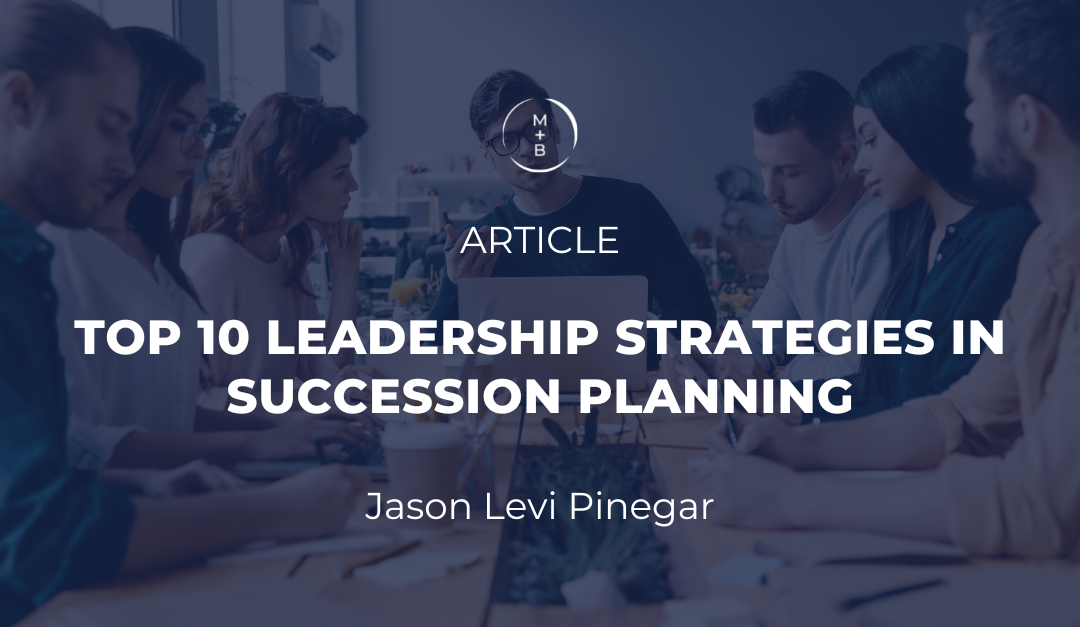“Succession planning is a critical component of long-term success. It ensures that the organization has the right people in the right positions, with the right skills, knowledge, and experience to drive growth and innovation.”
John F. Milligan, former CEO of Gilead Sciences Inc.
1. START PLANNING EARLY
2. IDENTIFY POTENTIAL SUCCESSORS
SKILLS
EXPERIENCE
POTENTIAL
3. DEVELOP A PLAN FOR EACH POTENTIAL SUCCESSOR
4. COMMUNICATE WITH POTENTIAL SUCCESSORS
5. create a culture of leadership development
6. TEST POTENTIAL SUCCESSORS
7. EVALUATE + REFINE YOUR PLAN

8. MAKE SUCCESSION PLANNING A PRIORITY
9. CONSIDER DIVERSITY + INCLUSION
10. BE TRANSPARENT
Partner
pinegar@mbexec.com
o: 949.930.0563
m: 702.666.2458
Jason specializes in strategic executive talent acquisition and organizational leadership design and co-leads the firm’s Consumer, Industrial, and Sustainability/ESG practices. He supports a variety of clientele across venture capital, private equity, public, founder-led, and family-owned businesses. He brings expertise in management consulting with a unique focus in Leadership + Managing Organizational Change (MBA), coupled with valuable experience in organizational psychology, leadership assessment + development, and succession planning (MA-PPE, BA). Jason also serves as a Chair Member for the firm’s Lean Six Sigma, Corporate Social Responsibility (CSR), and Diversity, Equity, Inclusion, and Belonging (DEIB) committees.


